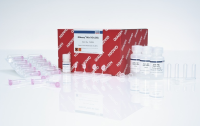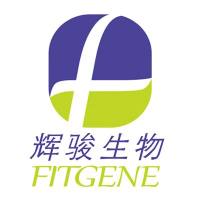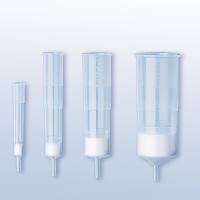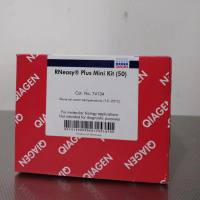【共享】经验:The RNeasy Mini Kit from Qiagen
丁香园论坛
1905
The RNeasy Mini Kit from Qiagen is designed for RNA extraction, although the basic format
is similar to other Qiagen products designed to purify nucleic acids: ion exchange columns
specifically bind RNA which is purified by wash steps and subsequently eluted in aqueous
solution. The RNeasy kit can purify total RNA from animal cells or tissues, bacteria and
yeast and another similar kit is available for the extraction of total RNA from plants and
filamentous fungi, the RNeasy Plant Mini Kit.
Samples for RNA extraction initially need to be lysed and, if necessary, homogenized. An
excellent accompanying handbook gives guidelines for RNA yields. For instance, yields for
common cell culture lines (COS7, HeLa, etc) and different tissues (brain, heart, etc) are
listed, as such, you really do not need to spend time establishing an appropriate amount of
starting material to generate the required amount of RNA. How to process the sample for
optimal RNA production is also discussed in detail. Different methods to lyse starting
samples are compared and whether or not a lysed sample needs homogenization is also
considered. Samples typically do need homogenization. If, however, homogenization is
required, one of the easiest methods is the QIAshredder, a companion product for the Mini
Kit but part of the plant kit. Lysates are loaded into QIAshredders that are then
microfuged for 2 minutes to mechanically homogenize the samples. All these options may seem
complex, however, the handbook is comprehensive yet concise enough to guide you in the
right direction - meaning you do not spend unnecessary time optimizing conditions.
A supplied buffer, that contains guanidine isothiocyanate to inactivate RNases, is used for
most of the various initial lysis methods. Ethanol is then added to the lysate/homogenate
so that RNA binds the silica-gel membrane of the spin-columns. The lysate/homogenate is
then simply added to the column and loaded by centrifugal force. The RNA bound to spin-
columns is washed once with a first buffer and twice with a second buffer, again using
centrifugal force. Finally, the RNA is eluted by addition of RNase-free water, supplied
with the kit, to the column and centrifugation. It is extremely convenient that all the
necessary tubes for wash steps and final elution are supplied in the kit and only beta-
mercaptoethanol and ethanol additions are needed for certain buffers for the simplest
extractions.
Typically, I use the RNA isolated from this to for cDNA synthesis of proteins of interest.
The complete extraction process can be extremely fast - monolayers of cells lysed in
culture dishes and homogenized with QIAshredders can yield RNA in only 30 minutes. The kit
can obviously generate RNA for many other procedures, though, such as differential display,
Northern blotting and RNase protection assays. The spin columns bind RNA of >200
nucleotides and so molecules such as tRNA are not purified. As such, the size distribution
of purified RNA is similar to older methods. The maximum yield per spin column is 100 ug
and the handbook, as stated, gives guidelines as to how much material to start with. These
guidelines are worth following as overloading columns can reduce performance. Finally, it
is worth noting that the comprehensive handbook not only describes how to use the product
for optimal results but also contains information about general procedures for working with
RNA. This extra information is invaluable for a person working with RNA for the first time
and includes details such as general precautions, how to prepare DEPC water and
electrophoresis tanks and how to verify RNA integrity.
is similar to other Qiagen products designed to purify nucleic acids: ion exchange columns
specifically bind RNA which is purified by wash steps and subsequently eluted in aqueous
solution. The RNeasy kit can purify total RNA from animal cells or tissues, bacteria and
yeast and another similar kit is available for the extraction of total RNA from plants and
filamentous fungi, the RNeasy Plant Mini Kit.
Samples for RNA extraction initially need to be lysed and, if necessary, homogenized. An
excellent accompanying handbook gives guidelines for RNA yields. For instance, yields for
common cell culture lines (COS7, HeLa, etc) and different tissues (brain, heart, etc) are
listed, as such, you really do not need to spend time establishing an appropriate amount of
starting material to generate the required amount of RNA. How to process the sample for
optimal RNA production is also discussed in detail. Different methods to lyse starting
samples are compared and whether or not a lysed sample needs homogenization is also
considered. Samples typically do need homogenization. If, however, homogenization is
required, one of the easiest methods is the QIAshredder, a companion product for the Mini
Kit but part of the plant kit. Lysates are loaded into QIAshredders that are then
microfuged for 2 minutes to mechanically homogenize the samples. All these options may seem
complex, however, the handbook is comprehensive yet concise enough to guide you in the
right direction - meaning you do not spend unnecessary time optimizing conditions.
A supplied buffer, that contains guanidine isothiocyanate to inactivate RNases, is used for
most of the various initial lysis methods. Ethanol is then added to the lysate/homogenate
so that RNA binds the silica-gel membrane of the spin-columns. The lysate/homogenate is
then simply added to the column and loaded by centrifugal force. The RNA bound to spin-
columns is washed once with a first buffer and twice with a second buffer, again using
centrifugal force. Finally, the RNA is eluted by addition of RNase-free water, supplied
with the kit, to the column and centrifugation. It is extremely convenient that all the
necessary tubes for wash steps and final elution are supplied in the kit and only beta-
mercaptoethanol and ethanol additions are needed for certain buffers for the simplest
extractions.
Typically, I use the RNA isolated from this to for cDNA synthesis of proteins of interest.
The complete extraction process can be extremely fast - monolayers of cells lysed in
culture dishes and homogenized with QIAshredders can yield RNA in only 30 minutes. The kit
can obviously generate RNA for many other procedures, though, such as differential display,
Northern blotting and RNase protection assays. The spin columns bind RNA of >200
nucleotides and so molecules such as tRNA are not purified. As such, the size distribution
of purified RNA is similar to older methods. The maximum yield per spin column is 100 ug
and the handbook, as stated, gives guidelines as to how much material to start with. These
guidelines are worth following as overloading columns can reduce performance. Finally, it
is worth noting that the comprehensive handbook not only describes how to use the product
for optimal results but also contains information about general procedures for working with
RNA. This extra information is invaluable for a person working with RNA for the first time
and includes details such as general precautions, how to prepare DEPC water and
electrophoresis tanks and how to verify RNA integrity.




![无内毒素质粒小量提取试剂盒MolPure® Endo-free Plasmid Mini Kit [可申请试用]](https://img1.dxycdn.com/2022/0128/159/8216489787052709253-14.jpg!wh200)




